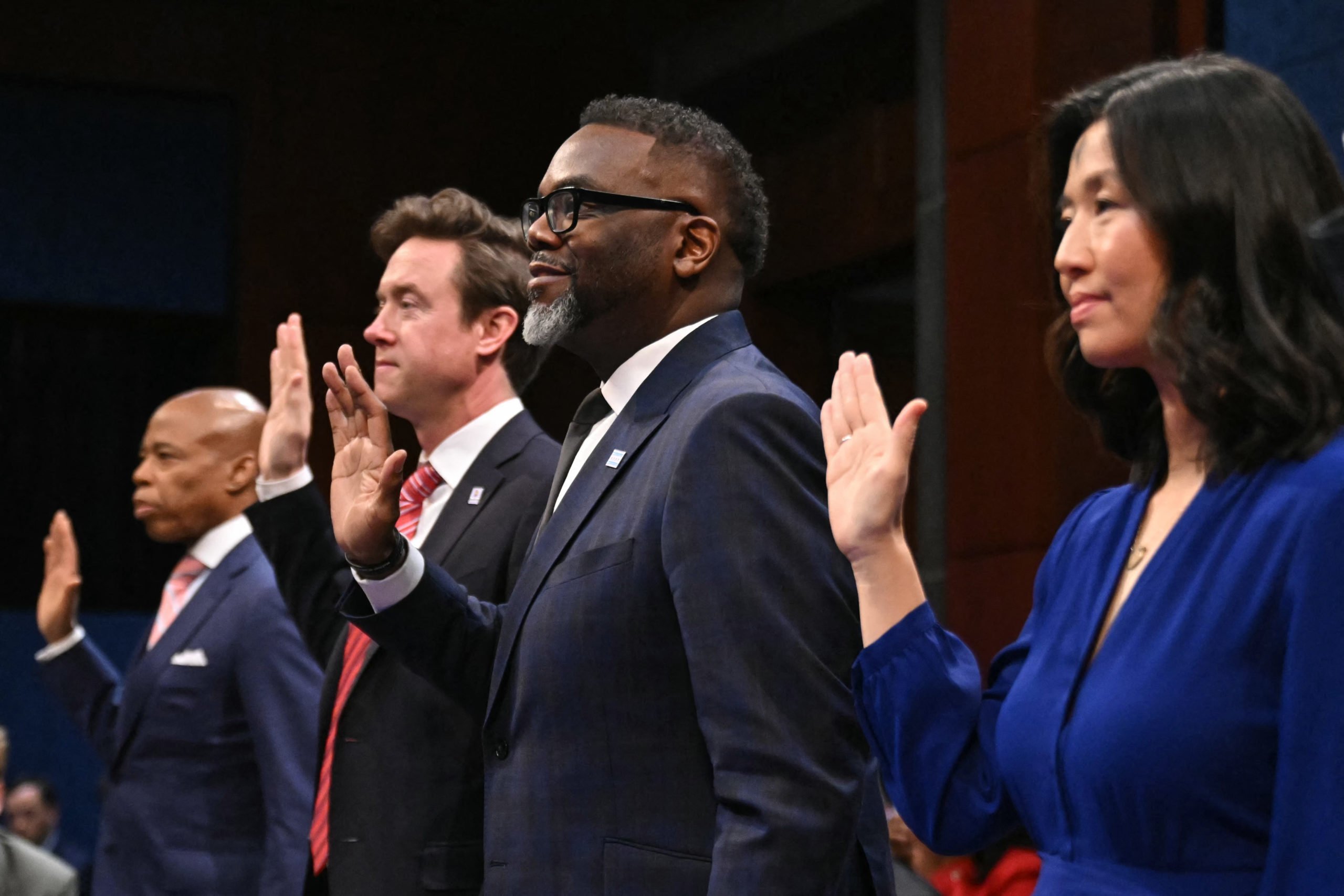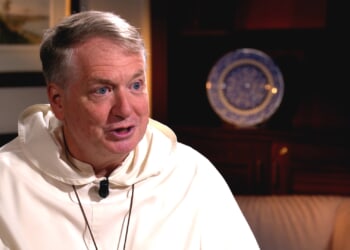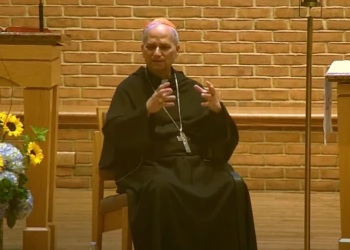President Donald Trump on Monday signed an executive order that targets sanctuary cities, the latest move by the White House to clamp down on jurisdictions that refuse to cooperate with federal immigration authorities.
Trump signed Protecting Communities From Criminal Aliens, a presidential proclamation that directs Attorney General Pam Bondi and Homeland Security Secretary Kristi Noem to identify city and state governments that are not complying with federal immigration laws, according to the White House. The sanctuary jurisdictions that refuse to amend or roll back their policies could face federal funding cuts and criminal or civil lawsuits. (RELATED: Feds Arrest Over 100 Illegal Migrants After Raiding Gang-Infested Nightclub)
Bondi and Noem have one month to identify sanctuary jurisdictions across the United States, according to the executive order.
“It’s quite simple — obey the law, respect the law, and don’t obstruct federal immigration officials and law enforcement officials when they are simply trying to remove public safety threats from our nation’s communities,” White House Press Secretary Karoline Leavitt said Monday morning when announcing the impending rollout of the executive order.

(L-R) New York City Mayor Eric Adams, Denver Mayor Michael Johnston, Chicago Mayor Brandon Johnson and Boston Mayor Michelle Wu are sworn in during a House Committee on Oversight and Government Reform hearing titled “A Hearing with Sanctuary City Mayors,” on Capitol Hill in Washington, DC, on March 5, 2025. (Photo by Saul LOEB / AFP) / ALTERNATE CROP (Photo by SAUL LOEB/AFP via Getty Images)
The new directive from the White House comes less than a week after an Obama-appointed judge temporarily blocked two other executive orders targeting sanctuary cities. In a ruling Thursday, U.S. District Judge William Orrick ruled the pair of orders, which sought to deny federal funds to sanctuary cities, likely to be unconstitutional and nearly identical to a 2017 order he shot down at the time.
Orrick’s ruling accused the two previous executive orders of lacking specifics on what qualifies as a sanctuary jurisdiction. The new order signed Monday could sidestep this issue, as it requires the Department of Homeland Security and the Justice Department to create a tangible list.
While there is no official definition for a “sanctuary city,” the label generally describes any locality that restricts local officials from assisting or otherwise cooperating with Immigration and Customs Enforcement (ICE) agents. Common sanctuary city policies prohibit local law enforcement from honoring immigration detainer requests, sharing information with ICE or notifying the agency of an impending release of a wanted illegal migrant.
The Trump administration Monday touted major border enforcement accomplishments in its first 100 days in office, such as reducing migrant crossings by 99.99%, arresting more than 151,000 illegal migrants and deporting more than 135,000 illegal migrants.
Roadblocks, however ,remain in the form of major cities like New York City, Chicago, Los Angeles and elsewhere that refuse to cooperate with federal immigration authorities, prompting the White House to take increasingly tougher stances against them. The administration in January established a task force to investigate sanctuary localities that may be in violation of the law. Bondi ordered funding pulled from sanctuary jurisdictions the day she was sworn into office in February.
In a sign of what little tolerance the administration has for those harboring illegal migrants from ICE custody, federal prosecutors arrested a Wisconsin judge after she allegedly helped an illegal migrant accused of violence sneak out of her courtroom while ICE was waiting for him.
“The American people have a right to know the list of cities and states that do not sufficiently comply with federal immigration law,” James Fitzpatrick, director of the Center To Advance Security In America, said to the Daily Caller News Foundation.
“These entities put their residents and visitors at risk by allowing illegal alien criminals who are ineligible to remain in this country to roam their streets,” Fitzpatrick said. “President Trump’s EO will force these cities and states to identify themselves and is a good start to restoring public safety and the rule of law.”
Trump on Monday also signed Strengthening and Unleashing America’s Law Enforcement to Pursue Criminals and Protect Innocent Citizens. This executive order aims to provide resources to law enforcement officers who “unjustly” incur liabilities or expenses for taking actions in the performance of their job duties. These resources include pro bono legal assistance to cops.
“My Administration will therefore: establish best practices at the State and local level for cities to unleash high-impact local police forces; protect and defend law enforcement officers wrongly accused and abused by State or local officials; and surge resources to officers in need,” the president wrote in his executive order. “My Administration will work to ensure that law enforcement officers across America focus on ending crime, not pursuing harmful, illegal race- and sex-based ‘equity’ policies.”
The two executive orders signed Monday mark more than 140 orders promulgated by Trump in his first 100 days in office, according to the White House. This total comes close to the total number of orders signed by President Joe Biden during his four years in office.
All content created by the Daily Caller News Foundation, an independent and nonpartisan newswire service, is available without charge to any legitimate news publisher that can provide a large audience. All republished articles must include our logo, our reporter’s byline and their DCNF affiliation. For any questions about our guidelines or partnering with us, please contact licensing@dailycallernewsfoundation.org.


![Stephen Miller Announces New Goal for ICE Mass Deportation Effort [WATCH]](https://www.right2024.com/wp-content/uploads/2025/05/Stephen-Miller-Announces-New-Goal-for-ICE-Mass-Deportation-Effort-350x250.jpg)


![Simone Biles Defends Trans Pitcher and Mocks Riley Gaines, It Doesn’t Go Well [WATCH]](https://www.right2024.com/wp-content/uploads/2025/06/Simone-Biles-Defends-Trans-Pitcher-and-Mocks-Riley-Gaines-It-350x250.jpg)

![LAPD Praises 'Peaceful' Rioters as They Set Cars on Fire and Attack Feds [WATCH]](https://www.right2024.com/wp-content/uploads/2025/06/LAPD-Praises-Peaceful-Rioters-as-They-Set-Cars-on-Fire-350x250.jpg)

![LA Protest Casualty? Dead Body Found as Riots Stretch Into Fifth Night [WATCH]](https://www.right2024.com/wp-content/uploads/2025/06/1749642627_LA-Protest-Casualty-Dead-Body-Found-as-Riots-Stretch-Into-350x250.jpg)

![Fans Shocked as Katy Perry Stops Concert After She’s Ambushed by Deranged Fan Onstage [WATCH]](https://www.right2024.com/wp-content/uploads/2025/06/Fans-Shocked-as-Katy-Perry-Stops-Concert-After-Shes-Ambushed-350x250.jpg)




